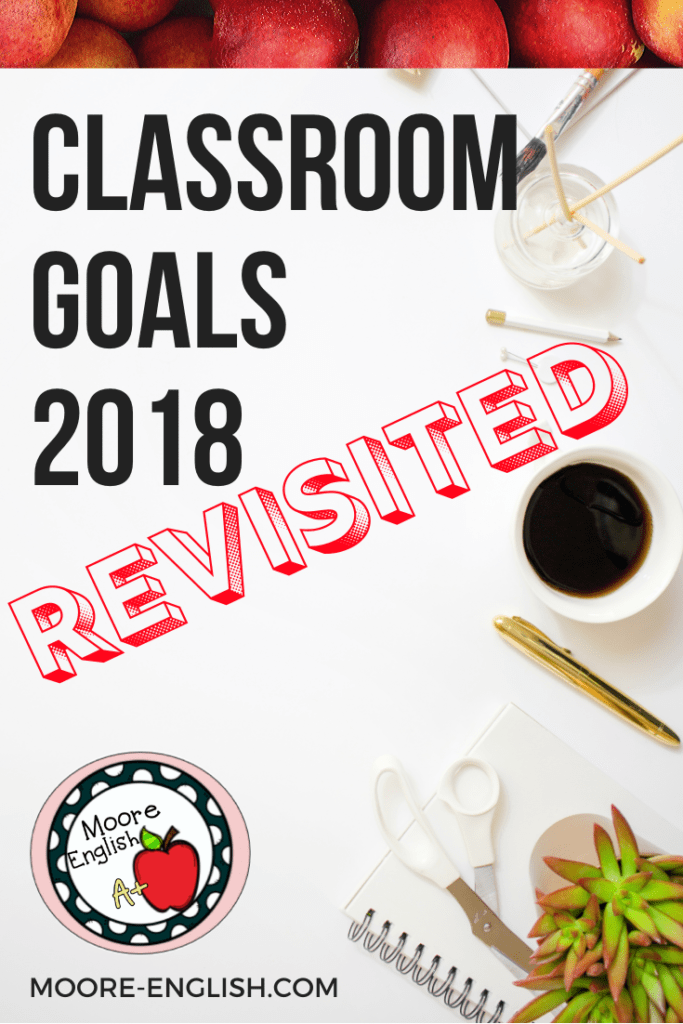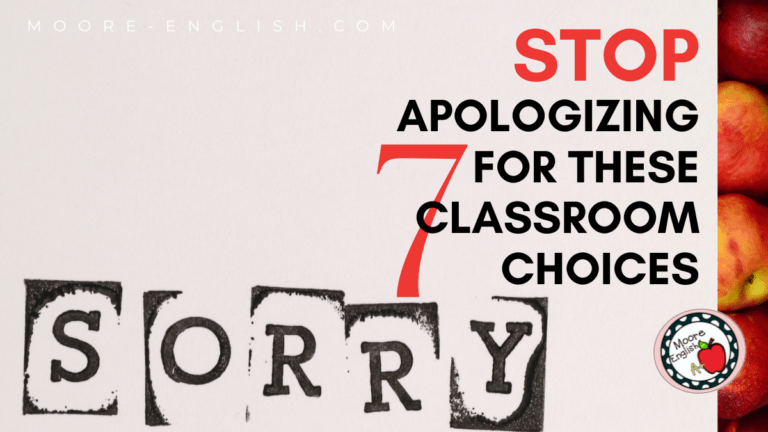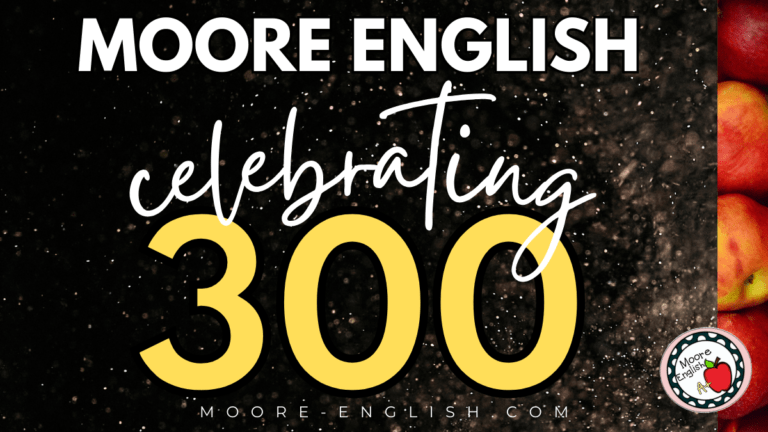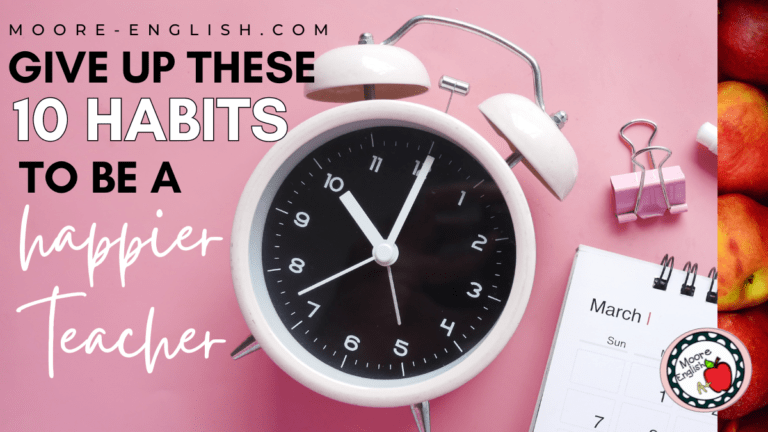This is an update of a post that originally appeared in August.
At the beginning of each semester, I ask students to set goals related to reading and writing. Then, over the course of the next 18 weeks, we revisit those goals. Now that I’m at the end of first semester, I wanted to take a minute and reflect on my goals and on my beliefs about goal setting.
Some things didn’t change…
While my students set academic goals, I also set classroom goals. Plenty of research suggests that writing down goals is important. Such research suggests that writing down goals is important for two main reasons:
1. Science. First, neuroscience suggests that “people who very vividly describe or picture their goals are anywhere from 1.2 to 1.4 times more likely to successfully accomplish their goals.” Furthermore, writing down your goals is part of whole-brain thinking, so now every aspect of your conscious mind is working toward helping you achieve your goals.
2. Accountability. After a challenging lesson or class, we often think, “Well, next time I’ll…”. While these are important internal dialogues and an essential part of professional growth, these dialogues are also easy to dismiss or forget. However, writing down goals promotes accountability and follow through. Suddenly, your internal dialogue is made solid and significant. It has weight and shape. Your dreams have become goals, and that can be scary but critical for making meaningful growth. In other words, writing down your goals forces you to own them.
This post this post may contain affiliate links. Please read the Terms of Use.
In addition to writing down professional goals, it is also important to share those goals. Being honest with yourself about your classroom strengths and struggles is important, but it is just as important to share and communicate with others. When you share your goals with co-workers, peers, or teacher friends, these benefits arise:
1. Strength. To begin, sharing your goals is not a sign of weakness but a profession of strength. By letting your peers know that you are aware of your own professional struggles, you signal a willingness to learn and grow. Further, you are modeling the kind of cognitive vulnerability that focuses meaningful professional growth and development, signaling to your peers that they can share similar #teachertruths without fear of judgement. This kind of sharing is a foundation of leadership.
2. Feedback. Now that you have shared your goals with your peers, they can help you achieve them. Instead of having one mind working toward your goals, you have multiple minds working toward a common goal. In other words, now you have the opportunity to draw on collective wisdom. Further, colleagues can provide creative solutions from an objective perspective you can’t access alone.
Here’s what did…
I mostly met my goals! My goals for the school year focused on making more positive parent contacts and teaching annotating text features. You can read the full goals here.
In terms of making more parent contact, I was great about making positive parent contacts during first quarter, and second quarter, I mostly fell off the wagon. In part, I think I should have revisited my goals at the end of the quarter. You can get my parent contact freebie here. From this experience, I feel like I learned as much about managing my goals as I did about parent contact.
In terms of annotating text features, I feel very good! My school is actively participating in a close reading initiative, so I think that helped. However, it was also helpful for me to directly teach the term “text features.” My students and I made a list of text feature types, and I made sure to choose versions of texts that include text features. For example, during Things Fall Apart, I usually teach “The Second Coming.” With goals in mind, I chose a version of the poem that includes some serious text features: footnotes, definitions, an image, and an about-the-author section. I also worked hard to add text features to our assessments and to my student’s summative projects. All in all, this was successful and not terribly difficult to do!
Next steps…
Since I feel good about teaching annotating text features and since I also want to continue growing as an educator, going into second semester, I am going to focus on two goals. First, I will continue my practice with annotating text features. Since I wasn’t as successful with positive parent contacts, I will also continue to work in this area.
Second, I would like to try using conversations as assessment. After reading this article from Edutopia, I think there’s a place for using conversation as assessment in my classroom. For my sophomores and juniors, we have some silent reading time during which students read a self-selected book. In the past, I have simply read with students, which has been a positive experience. However, I would also like to focus on some specific skills during silent reading, so I’m going to try to use conversation as assessment of those specific skills.
What are your resolutions going to be for the new school year? Share them below! I’d love to hear what you’re going to focus on in the next school year! Pick up my FREE student goal sheet HERE








